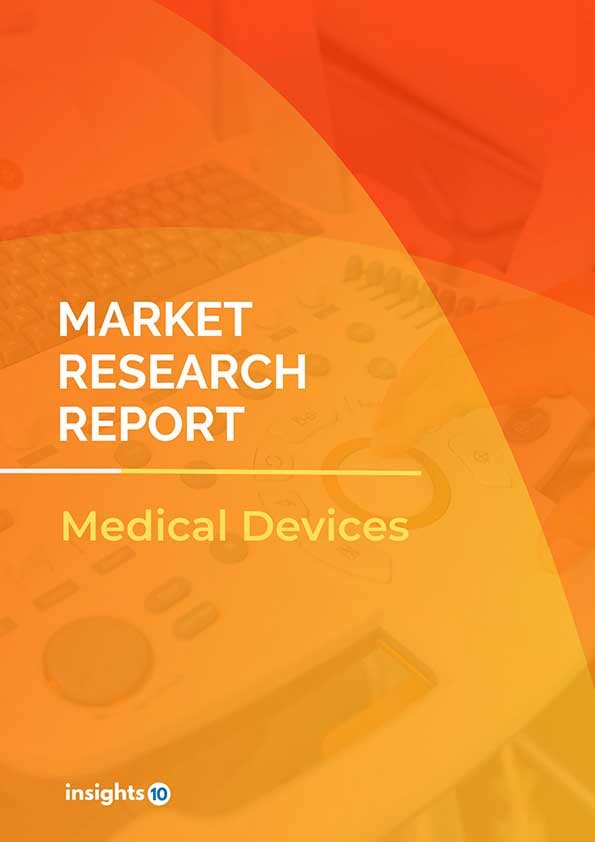US Biomaterials in Healthcare Market Analysis
The US biomaterials in the healthcare market are projected to grow from $65.6 Bn in 2022 to $153.4 Bn by 2030, registering a CAGR of 11.2% during the forecast period of 2022-30. Chronic diseases such as cardiovascular disease, cancer, and diabetes are on the rise in the US. The market is highly competitive, with several key players, including BASF SE, DSM NV, Invibio Ltd., Carpenter Technology Corporation, Evonik Industries AG, and Royal DSM. These companies invest heavily in research and development to develop new biomaterials and improve the performance of existing ones.
Buy Now

US Biomaterials in Healthcare Market Executive Summary
According to projections, the US biomaterials market for healthcare would increase from $65.6 Bn in 2022 to $153.4 Bn in 2030, growing at a CAGR of 11.2% during the forecast period of 2022-30.
The term "biomaterials" in the US healthcare industry refers to the use of biocompatible materials in implants and medical devices that may be utilised to replace or improve sick or damaged tissues or organs. Moreover, medications or other therapeutic agents may be delivered to particular bodily parts via biomaterials. The prevalence of chronic illnesses is rising, the population is ageing, and biomaterials technological breakthroughs are all driving forces in the industry.
Based on type, application, and end-user, the US biomaterials market in the healthcare industry may be divided. Metals, ceramics, polymers, and composites are examples of different kinds of biomaterials.
Few of the medical fields where biomaterials are used:
- Cardiovascular
- Orthopaedic
- Dental
- Wound care
- Ophthalmology
- Plastic surgery
Hospitals, clinics, and research facilities are some of the final customers of biomaterials in the healthcare industry.
There are a number of significant competitors in the industry, including BASF SE, DSM NV, Invibio Ltd., Carpenter Technology Corporation, Evonik Industries AG, and Royal DSM. The market is very competitive. These businesses make significant investments in R&D to create novel biomaterials and enhance the functionality of ones that already exist.
By guaranteeing the safety and effectiveness of biomaterials used in medical devices and implants, regulatory organisations like the Food and Drug Administration (FDA) play a vital role in the biomaterials market for the healthcare industry. To assure the safety and efficacy of biomaterials used in medical devices, the FDA has devised a strict approval procedure that calls for intensive research and clinical studies. As a result, the regulatory environment may provide a substantial barrier to entry for new competitors in the biomaterials market for healthcare.
.png)
Market Dynamics
Growth Drivers
Many important variables, such as the following, are what drive the US biomaterials in the healthcare market:
- Chronic illnesses are becoming more prevalent in the US, including diabetes, cancer, and cardiovascular disease. Since they may be utilised to replace or supplement damaged tissues or organs, biomaterials are being employed more often in the treatment of various illnesses.
- Increasingly older population: The US's ageing population is another factor increasing the need for biomaterials in the healthcare sector. People are more prone to chronic diseases that need medical attention as they become older. With elderly persons, orthopaedic and cardiovascular applications often employ biomaterials.
- Technical developments: The industry is also being driven by developments in biomaterials technology, such as the creation of novel materials and better production processes. In comparison to earlier generations of biomaterials, new biomaterials are now being produced that function better and are more biocompatible.
- Demand for less invasive treatments is rising, which is also boosting the need for biomaterials in the healthcare industry. Since they may be given to particular body regions and eliminate the need for more invasive operations, biomaterials are being utilised more often in minimally invasive treatments including laparoscopic surgery and catheter-based therapies.
- Increasing healthcare costs: The US healthcare system continues to spend more money, which is fueling demand for biomaterial-infused medical devices and implants. Devices that are economical and might lessen the need for more costly procedures are increasingly needed as healthcare costs rise.
Competitive Landscape
Key Players
There are many key players in the US biomaterials in the healthcare market, including:
- Johnson & Johnson
- Zimmer Biomet
- Medtronic
- Abbott Laboratories
- Stryker Corporation
- Baxter International
- Boston Scientific
- DSM Biomedical
- Invibio
- Evonik Industries
Healthcare Policies and Regulatory Landscape
To assure patient safety and product efficacy, the US healthcare regulations and regulatory environment for biomaterials in healthcare are complicated and heavily regulated. The following are some of the main guidelines and laws regulating the use of biomaterials in healthcare:
- FDA Regulations: Via a rigorous premarket clearance procedure, the US Food and Drug Administration (FDA) controls medical devices and biomaterials used in healthcare. Before biomaterials are utilised in implants or medical devices, the FDA evaluates them for safety and efficacy.
- Good Manufacturing Practices: To guarantee that biomaterials used in healthcare are of the highest quality and consistent with their intended purpose, they must be produced in accordance with GMP laws.
- Biocompatibility Requirements: To be utilised in medical procedures, biomaterials must be biocompatible, which implies they must not have any negative effects on live tissue. The testing specifications for determining the biocompatibility of medical devices are outlined in the ISO 10993 set of standards.
- HIPAA, or the Health Insurance Portability and Accountability Act, is a federal legislation that regulates the confidentiality and privacy of patient health information. To safeguard patient privacy, healthcare professionals and producers of biomaterials and medical devices are required to adhere to HIPAA standards.
- Medicare Coverage: Medicare is a government health insurance programme that provides coverage to qualified seniors and those with certain disabilities who are over 65. If they are determined to be medically essential, Medicare will pay for certain medical equipment and treatments, including those that use biomaterials.
The regulatory framework for biomaterials in healthcare in the US and US healthcare regulations as a whole is created to guarantee patient safety and product efficacy. It may be time-consuming and expensive for manufacturers of medical devices and biomaterials to bring their goods to market because of the stringent rules and regulations that must be followed, but it ultimately helps patients and the healthcare sector as a whole.
1. Executive Summary
1.1 Device Overview
1.2 Global Scenario
1.3 Country Overview
1.4 Healthcare Scenario in Country
1.5 Regulatory Landscape for Medical Device
1.6 Health Insurance Coverage in Country
1.7 Type of Medical Device
1.8 Recent Developments in the Country
2. Market Size and Forecasting
2.1 Market Size (With Excel and Methodology)
2.2 Market Segmentation (Check all Segments in Segmentation Section)
3. Market Dynamics
3.1 Market Drivers
3.2 Market Restraints
4. Competitive Landscape
4.1 Major Market Share
4.2 Key Company Profile (Check all Companies in the Summary Section)
4.2.1 Company
4.2.1.1 Overview
4.2.1.2 Product Applications and Services
4.2.1.3 Recent Developments
4.2.1.4 Partnerships Ecosystem
4.2.1.5 Financials (Based on Availability)
5. Reimbursement Scenario
5.1 Reimbursement Regulation
5.2 Reimbursement Process for Diagnosis
5.3 Reimbursement Process for Treatment
6. Methodology and Scope
US Biomaterials in Healthcare Market Segmentation
By Type (Revenue, USD Billion):
Based on type, the market is segmented into Metallic Biomaterials, Polymeric Biomaterials, Ceramic Biomaterials, and Natural Biomaterials. The Metallic Biomaterials segment accounted for the largest share of the US market in 2019. The growing geriatric population USly is expected to drive growth for this segment.
- Metallic Biomaterials
- Stainless Steel
- Titanium & Titanium Alloys
- Cobalt-Chrome Alloys
- Gold
- Silver
- Magnesium
- Polymeric Biomaterials
- Polymethylmethacrylate
- Polyethylene
- Polyester
- Silicone Rubber
- Nylon
- Polyetheretherketone
- Other Polymeric Biomaterials
- Ceramics
- Calcium Phosphate
- Zirconia
- Aluminum Oxide
- Calcium Sulfate
- Carbon
- Glass
- Natural Biomaterials
- Hyaluronic Acid
- Collagen
- Gelatin
- Fibrin
- Cellulose
- Chitin
- Alginates
- Silk
By Application (Revenue, USD Billion):
The cardiovascular, orthopaedic, dental, plastic surgery, wound healing, tissue engineering, ophthalmology, neurological/CNS, and other applications segments are made up of the biomaterials market. The market category for wound healing is anticipated to have the highest CAGR in 2019. The market will increase as a result of factors including expanding healthcare infrastructure, a large population pool, a rising diabetic population, and rising healthcare spending. Surgical Guides
- Cardiovascular
- Catheters
- Stents
- Implantable Cardiac Defibrillators
- Pacemakers
- Sensors
- Heart Valves
- Vascular Grafts
- Guidewires
- Others
- Orthopedic
- Joint Replacement
- Knee Replacement
- Hip Replacement
- Shoulder Replacement
- Others
- Viscosupplementation
- Bioresorbable Tissue Fixation
- Spine
- Spinal Fusion Surgeries
- Minimally Invasive Fusion Surgeries
- Motion Preservation & Dynamic Stabilization Surgeries
- Pedicle-Based Rod Systems
- Interspinous Spacers
- Artificial Discs
- Fracture Fixation Devices
- Bone Plates
- Screws
- Pins
- Rods
- Wires
- Synthetics Bone Grafts
- Joint Replacement
- Ophthalmology
- Contact Lenses
- Intraocular Lenses
- Functional Replacement of Ocular Tissues
- Synthetic Corneas
- Others
- Contact Lenses
- Dental
- Dental Implants
- Dental Bone Grafts & Substitutes
- Dental Membranes
- Tissue Regeneration
- Plastic Surgery
- Soft-Tissue Fillers
- Craniofacial Surgery
- Wound Healing
- Wound Closure Devices
- Sutures
- Staples
- Surgical Hemostats
- Internal Tissue Sealants
- Adhesion Barriers
- Hernia Meshes
- Wound Closure Devices
- Tissue Engineering
- Scaffolds for Regenerative Medicine
- Nanomaterials for Biosensing
- Tailoring of Inorganic Nanoparticles
- Neurological/Central Nervous System Applications
- Shunting Systems
- Cortical Neural Prosthetics
- Hydrogel Scaffolds for CNS Repair
- Neural Stem Cell Encapsulation
- Other Applications
- Drug Delivery Systems
- Gastrointestinal Applications
- Bariatric Surgery
- Urinary Applications
Insights10 will provide you with the reports within 10 key parameters which are:
- Market Overview
- Market Growth Drivers & Restraints
- Epidemiology of Disease Type
- Market Segmentation
- Market Share
- Competitive Landscape
- Key Company Profiles
- Healthcare Policies & Regulatory Framework
- Reimbursement Scenario
- Factors Driving Future Growth
Based on our many years of experience, we believe that these are the parameters that are critical to decision-making for business stakeholders. Our focused approach to developing reports focused on 10 key parameters, enabled us to arrive at the name “Insights10”.

Stage I: Market Data Collection
Primary Interviews: We have developed a network of experts, freelancers, and researchers across countries through which we engage with local experts to gather key data points and assumptions about each market. We also engage regularly with some of the best market research agencies such as Atheneum, GuidePoint, GLG, etc. to conduct surveys and interviews, and build intelligence. We have language translators as a part of our team, who between them can cover 30+ languages allowing us to extract better local insights.
Secondary Data Collection: We have developed strong expertise and experience in secondary data collection methods for developing unique data sets and research material. We gather data from multiple reliable sources to maintain a high level of accuracy and consistency. The market data is analyzed and forecasted using appropriate statistical and coherent models. The report offers an overall analysis of the market size, growth, and market share as well as a segment-level analysis of the specific market. Our report includes precise, to-the-point information related to the overall market, competition, growth drivers, challenges, regulatory updates, and competition.
Data Sources: We have access to multiple highly reliable free and subscription data sources. We have many years of experience to understand which sources are more dependable for what and which to prefer for the reliable and latest information. The key sources of information include the following, but are not limited to:

Stage II: Market Data Analysis and Statistical Model
Market Trends: We generally look at macro parameters and micro indicators. The macro parameters include changes in government policies, demand and supply of the market, government intervention programs, and major market share. The micro indicators are GDP growth, market size, market volume, etc. We also understand nuances specific to each country like the US, Canada, India, Germany, etc., and have worked across 60+ countries and hence not only understand global trends but how these differ by country, how payment models, market structure, cultural parameters, etc. differ in each country.
Market Sizing and Analysis: Our expert data analytics team has created various market forecast models by employing the top-down approach i.e. starting with the large overall market and segmenting different areas and the bottom-up approach i.e. starting with population and epidemiology and rolling up based on spend, etc., estimating the size of the market, and distributing among the geographic and/or product segments.
The top-down approach is mainly used for new product forecasting and the bottom-up approach is used for demand estimation of any product for different countries summed up to form the total market. We are able to round off insights and build stronger forecasts because we always do both these methods and triangulate the final numbers.
The study on the market covers the analysis of the leading geographies such as Asia-Pacific, Africa, Europe, Middle East, North America, and Latin America for the period of 2022 to 2030. The qualitative analysis covers the industry landscape and trends, market opportunities, competitive landscape, and policy and regulatory scenario, and the quantitative analysis covers different market estimates and forecasts.
Data Triangulation & Validation:
Data triangulation of various sources and results of the research are carried out by benchmarking with reliable sources such as industry statistics, statistical databases, and company-level averages, etc.
We make sure to finalize the numbers in alignment with the market research. Firstly, our internal experts ensure thorough validation and checking to ensure accurate and precise analysis and then validation is also done using a multiple-data analysis model. Two-level validation is done and entails the finalization of the report scope and the way of representation pattern.
(1).png)
Stage III: Interpretation and Presentation
Analysis & Interpretation: The information gathered is then analyzed and synthesized. The second series of interviews are done if necessary to check and validate. The future opportunities are analyzed by understanding product commercialization and many other factors. It also comprises the analysis of data discrepancies observed across various data sources. Information procured from secondary and primary results is then, interpreted by considering the following parameters: (a partial list)
- Establishing market drivers and trends
- Analyzing the regulatory landscape to understand future growth
- Market Segment based analysis to obtain revenue/volume
- Analyzing current needs and determining penetration to estimate the market
Insights: Our reports deliver actionable insights backed with supporting facts and figures to assist you in achieving exemplary growth. Our in-depth analyses are interspersed with relevant insights and statistics to offer an executive-level view of a given market. The description helps in correlating many minor factors affecting the market and their impact on the different segments within the market.
Data curated from the analysis and interpretation are drawn to portray all in one consolidated report.
Presentation & Reporting: The market research report is presented in different forms such as charts by using a scientific approach for easy understanding. Historic, current, and future analysis is provided for each market in terms of both value and volume. The size of the market is interpreted in the US Dollar value and the respective unit, based on the product, for volume consumption.
The foreign exchange rates are calculated on the respective dates and for the respective regions covered in the study.
To request a free sample copy of this report, please complete the form below.
We value your inquiry and offer free customization with every report to fulfil your exact research needs.
This report addresses
- Intelligent insights to take informed business decisions
- Qualitative, acute and result oriented market analysis
- Market size and forecasts from 2022 to 2030
- Opportunities for expansion and in-depth market analysis
- Segmentation and regional revenue forecasts
- Analysis of the market share and competitive landscape
- Strategic Recommendations to chart future course of action
- Comprehensive Market Research Report in PDF and PPT formats
Need more?
- Ask our analyst how this study was put together to learn more
- Discuss additional requirements as part of the free customisation
- Add more countries or regions to the scope
- Get answers to specific business questions
- Develop the business case to launch the product
- Find out how this report may influence your business revenue



